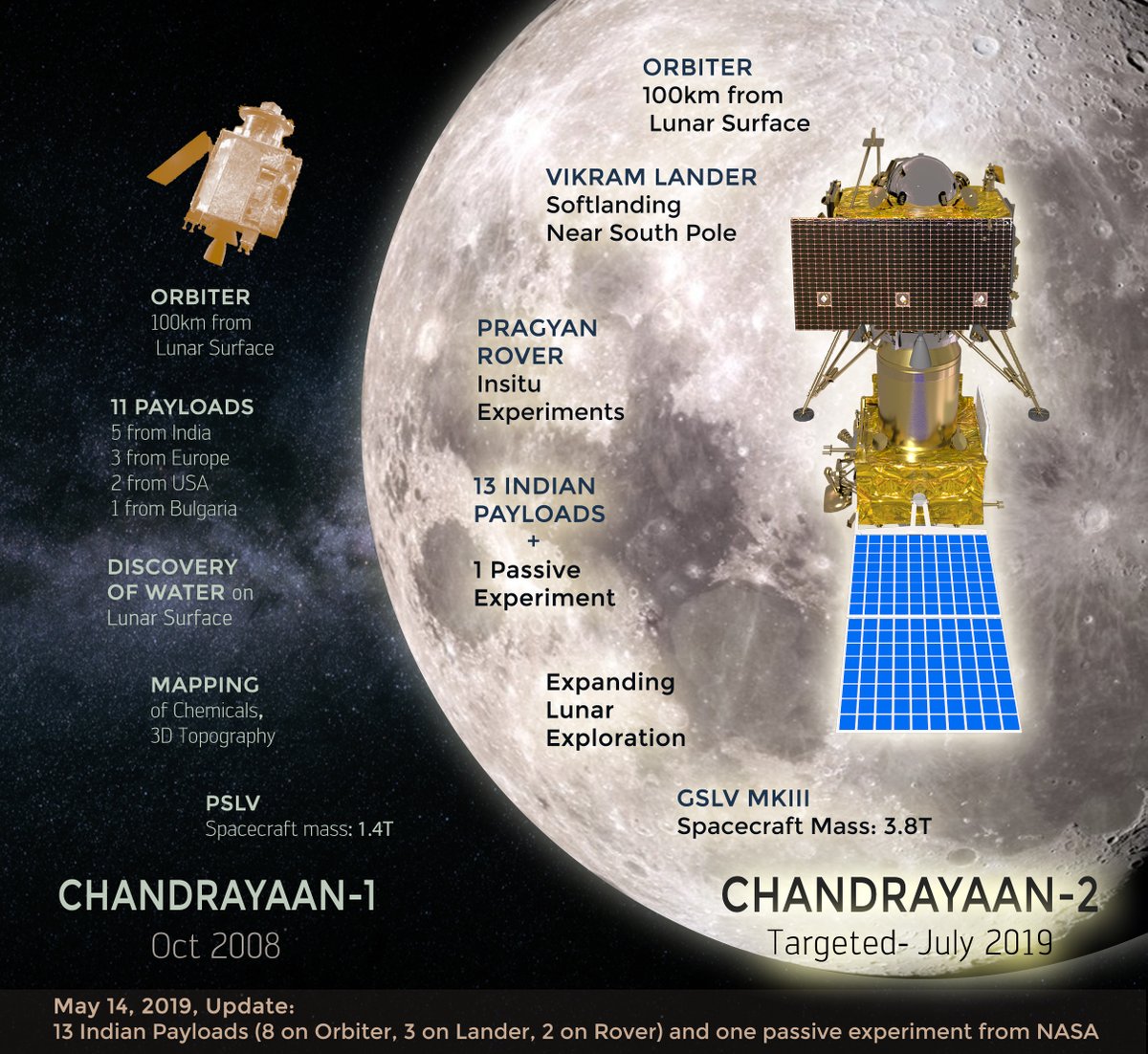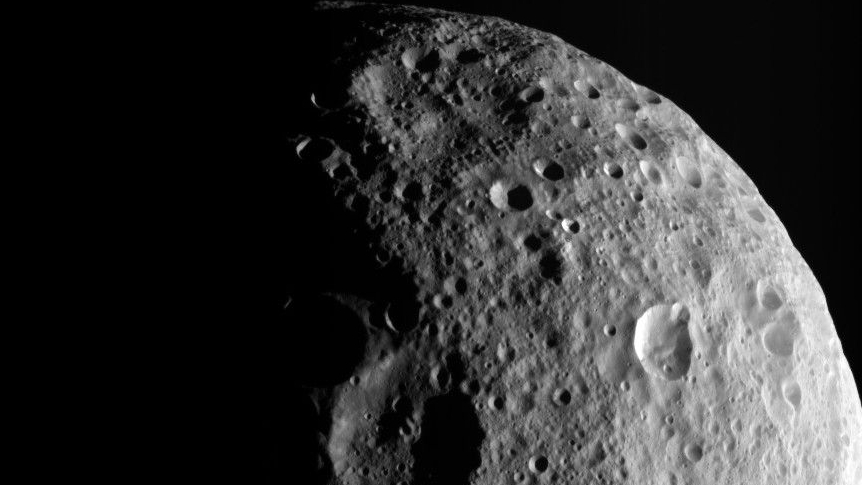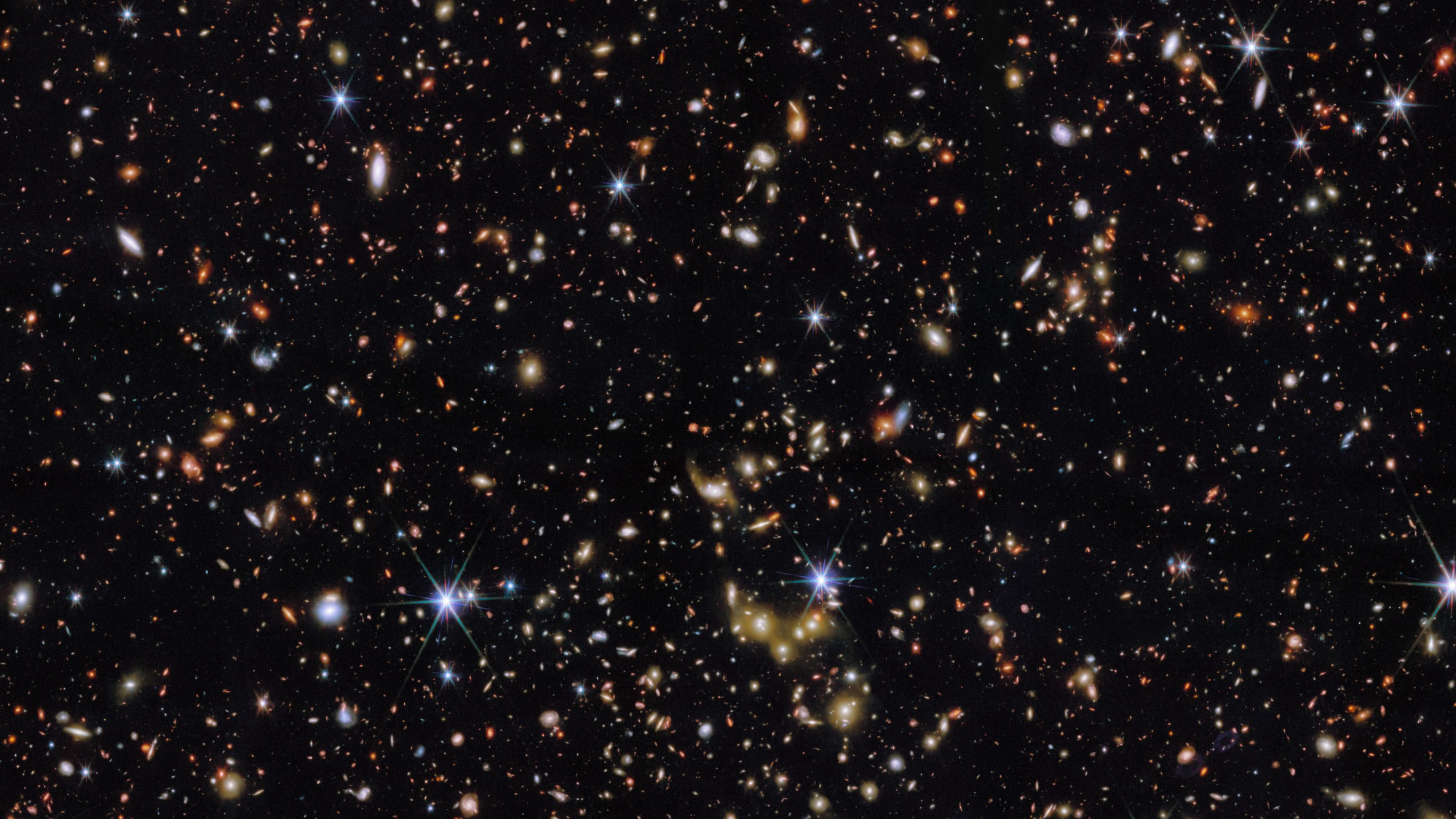
India Readies Chandrayaan-2 Moon Mission for July Launch
The mission consists of an orbiter, lander and rover.

India is gearing up for the July launch of Chandrayaan-2, a robotic lunar orbiter/lander/rover combo that is scheduled to touch down at a predetermined site close to the lunar south pole.
According to a statement from the Department of Space of the Indian Space Research Organization (ISRO), the country's moonshot will fly atop a Geosynchronous Satellite Launch Vehicle (GSLV) MkIII booster during the window of July 9-16, with an expected moon landing on Sept.6, 2019.
Chandrayaan-2 will be an advanced version of the previous Chandrayaan-1 mission to the moon that launched successfully on Oct. 22, 2008, from the Satish Dhawan Space Centre.
Related: Moon Master: An Easy Quiz for Lunatics
Three modules
India's second lunar mission, Chandrayaan-2 is comprised of three modules: an orbiter, the Vikram lander (named after former ISRO chairman Vikram Sarabhai) and the Pragyan rover.
The orbiter and lander will be interfaced mechanically and stacked together as an integrated module and accommodated inside the GSLV MK-III launch vehicle. The Pragyan rover is housed inside the lander.
After launch into Earth orbit by the GSLV MK-III, the integrated module will reach moon orbit using an orbiter propulsion module. Subsequently, the lander will separate from the orbiter and soft-land at the predetermined site close to the lunar south pole.
Get the Space.com Newsletter
Breaking space news, the latest updates on rocket launches, skywatching events and more!
Payloads
Once deployed, the Pragyan rover will carry out scientific experiments on the lunar surface. Instruments are also mounted on the lander and orbiter for performing science tasks.
There are 13 Indian payloads (eight on the orbiter, three on the lander and two on the rover), along with one passive experiment from NASA — a Laser Retro-reflector Array (LRA) for Lunar Landers.
This LRA is the same design as the one carried onboard Israel's Beresheet lander that crashed on the moon last month.
NASA's retro-reflector is a mirrored device that reflects laser light signals to help pinpoint precisely where a lander is. The LRA can also help researchers accurately calculate the moon's distance from Earth.
- India Will Launch Its Own Astronauts to Space by 2022, Government Says
- In Photos: India Launches the RISAT-2B Earth-Imaging Satellite
- India Launches Record-Breaking 104 Satellites on Single Rocket
Leonard David wrote the book "Moon Rush: The New Space Race," which was published this month by National Geographic. A longtime writer for Space.com, David has been reporting on the space industry for more than five decades. Follow us on Twitter @Spacedotcom or Facebook.
Join our Space Forums to keep talking space on the latest missions, night sky and more! And if you have a news tip, correction or comment, let us know at: community@space.com.

Leonard David is an award-winning space journalist who has been reporting on space activities for more than 50 years. Currently writing as Space.com's Space Insider Columnist among his other projects, Leonard has authored numerous books on space exploration, Mars missions and more, with his latest being "Moon Rush: The New Space Race" published in 2019 by National Geographic. He also wrote "Mars: Our Future on the Red Planet" released in 2016 by National Geographic. Leonard has served as a correspondent for SpaceNews, Scientific American and Aerospace America for the AIAA. He has received many awards, including the first Ordway Award for Sustained Excellence in Spaceflight History in 2015 at the AAS Wernher von Braun Memorial Symposium. You can find out Leonard's latest project at his website and on Twitter.









